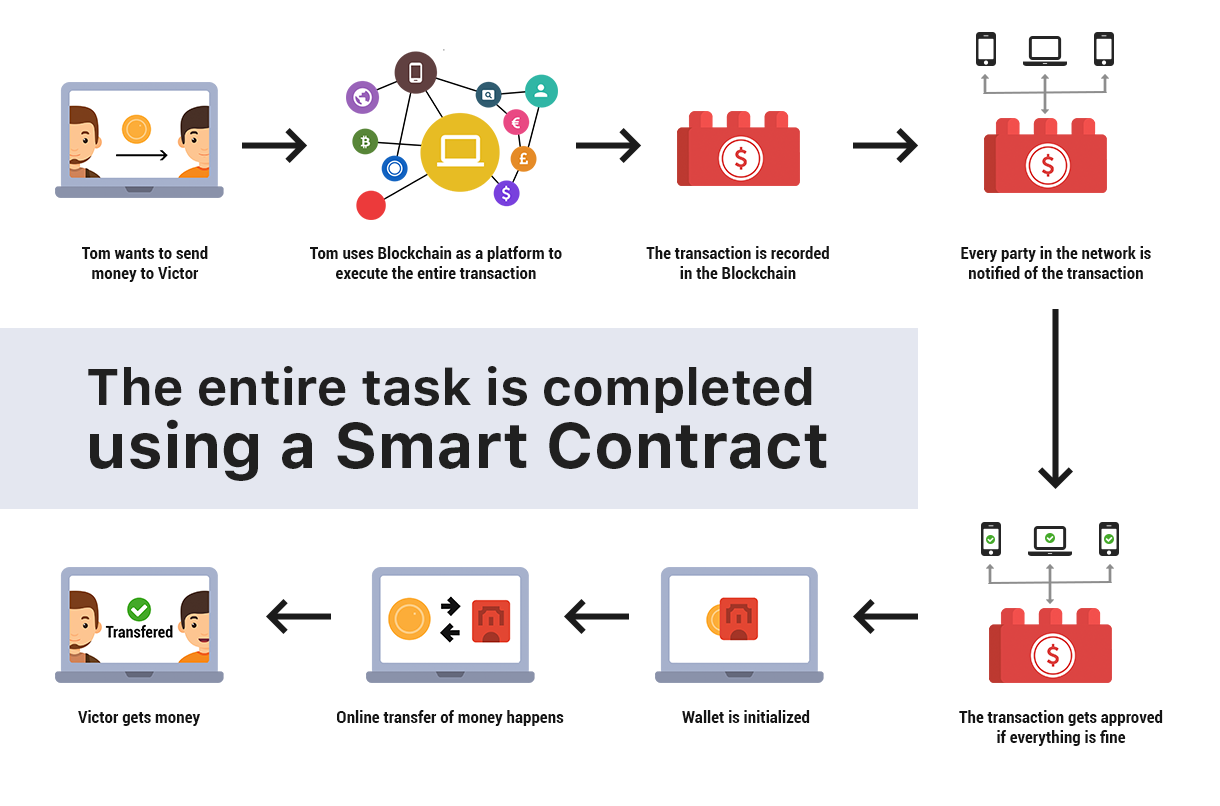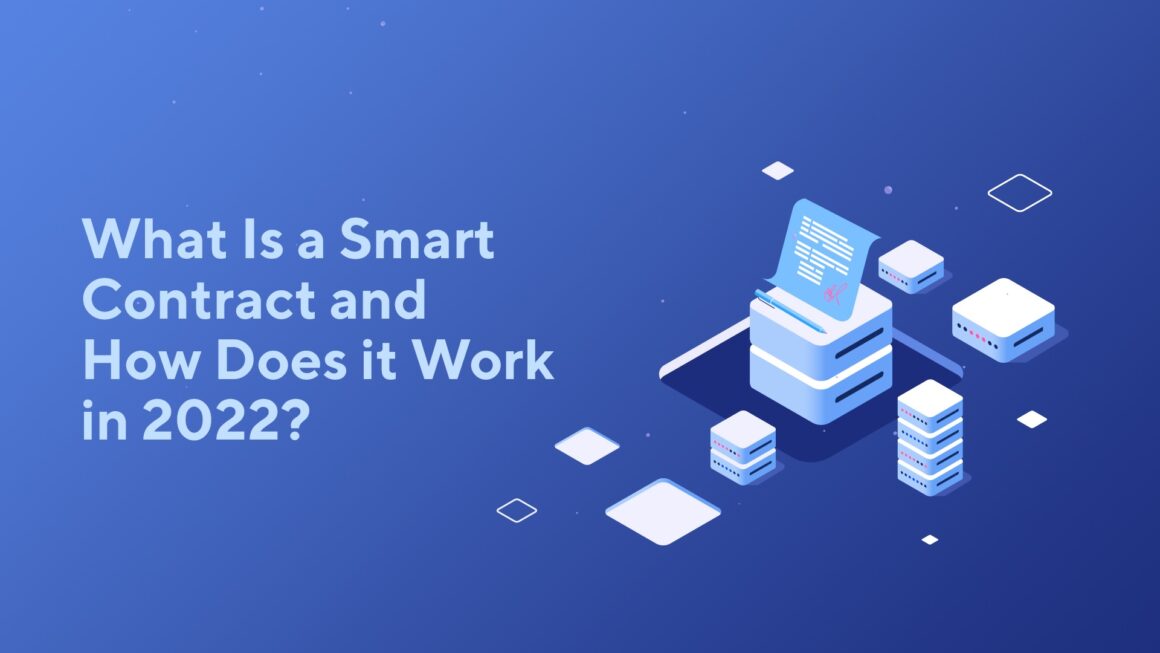A smart contract is an analog of a computer program that runs on a blockchain. The main feature is that the programmed sequence is launched regardless of the participants’ desire. These are the algorithms by which ownership information can be generated, controlled, and exchanged. Let’s take a closer look at what smart contracts in blockchain are all about.
How Did Smart Contracts Appear?
The very idea of computer algorithms that are executed automatically appeared in the mid-1990s. However, they gained popularity after the launch of Ethereum. It was then that most people learned about what smart contracts in the blockchain are. Vitalik Buterin studied the Bitcoin blockchain and realized that it is not suitable as an environment for the launch and operation of smart contracts. So he invented his own one and launched Ethereum on it.
In the simplest case, the algorithm is programmed to perform an action after a condition is met — for example, ownership of a painting passes to the buyer after paying a specified price. When the condition is met, the participants in the transaction cannot influence its execution; that is, the owner of the painting will necessarily transfer the rights to it to the buyer. Since the contract is executed automatically, fraud on the part of either party is completely excluded. In addition, thanks to the blockchain, it is impossible to make changes to the contract and its execution history.
Now Ethereum is the environment for the functioning of various services based on smart contracts:
-
- decentralized financial services;
-
- tokens of various services;
-
- cryptocurrency games;
-
- non-fungible tokens (NFTs).
Ethereum is not the only blockchain suitable for these purposes. There are other options, such as EOS or Stellar.
The main advantage of such algorithms is the ability to confirm transactions with high reliability without the participation of third parties or government agencies — for example, a transaction for the sale of real estate does not need to be registered with a notary. First, the contract is executed automatically. Second, all data is stored on-chain and cannot be deleted. Thirdly, due to distributed storage, counterfeiting is theoretically impossible.
How Does Smart Contract Work?
In practice, the algorithm is encoded using program code and placed on the blockchain. After that, it stays there until it receives a signal for execution. After that, the unconditional execution of the agreed actions takes place.
Smart contracts in blockchain have several mandatory attributes:
-
- data on all parties to the transaction (there may be two or more), as well as their electronic keys;
-
- the environment in which the contract functions and through which it interacts with the outside world;
-
- the subject of the contract, that is, the action to be performed;
-
- the conditions under which the execution takes place.

Where Are Smart Contracts Used?
This algorithm is so versatile that it can be adapted to solve almost all issues where data storage is needed. This versatility is due to three characteristics:
-
- first, accounting for all data;
-
- secondly, indefinite storage of information;
-
- thirdly, complete reliability and protection against forgery.
Most often, smart contracts are involved in the functioning of cryptocurrency. Thanks to them, transactions are made between participants in a system. In addition, they can be adapted for such purposes:
-
- registration of purchase and sale of cars;
-
- registration of real estate transactions;
-
- election of candidates for elective office;
-
- work of stock and currency exchanges;
-
- accounting of documents;
-
- control of the movement of goods from the manufacturer to the final consumer;
-
- control of production processes, repair, and maintenance of cars.
An Example of How a Smart Contract Works
Suppose a country uses a blockchain that registers transactions for selling and purchasing houses (such systems already exist and are operated in practice). The basis of the distributed network is the Ethereum blockchain.
Contract Features
Let’s say the only smart contract programmed will be the transfer of ownership of a house after depositing money. Please note that other actions can be included in the chain. Moreover, all of them will work in parallel and run under certain conditions. The single contract example is chosen for simplicity.
The required elements will be:
-
- data about the property;
-
- information about the current owner;
-
- information about the buyer;
-
- transaction cost.
Transaction Execution
Anyone can use the running system and use smart contracts. This happens according to the following scheme.
Jane wants to sell her house. She places an ad about it on the Internet. No intermediaries are involved in the transaction. The main thing is for the owner to indicate a prerequisite — the cost.
Anyone can not only get acquainted with Jane’s offer but also buy a house. At the same time, you do not need to take additional confirmation from Jane if the smart contract does not provide for this.
Adam decides to purchase the property. All he needs to do for this is to transfer the specified amount. Further actions will be carried out automatically.
Transaction Features
Since a smart contract is used, the transaction will have several features.
Firstly, Adam receives the right to the house after transferring the specified amount. Until then, no action by the buyer will lead to the execution of the transaction.
Secondly, after the transfer of funds, Jane will not be able to refuse to sell the house. The contract will be executed automatically, and a record that Adam has become the property owner will appear in the next block of the chain.
Thirdly, none of the participants will be able to deceive each other. Jane will be the confirmed owner, as the entire history of the house can be traced in the blockchain. Adam will not be able to force Jane to transfer the house to him by threats since the fact of transferring money will not be recorded by the algorithm.
Of course, the above is an exaggerated example. But it allows you to understand the essence of this tool.
Conclusion
Smart contracts in blockchain expand the possibilities of using the technology. Nowadays, they are used in various industries. But the bottleneck of this tool is cryptocurrencies since all settlements are made with digital tokens. Thus, if one of the countries bans crypto, smart contracts will not work. In addition, it is necessary to legally regulate these processes by local legislation for wide distribution.

Leave a Reply